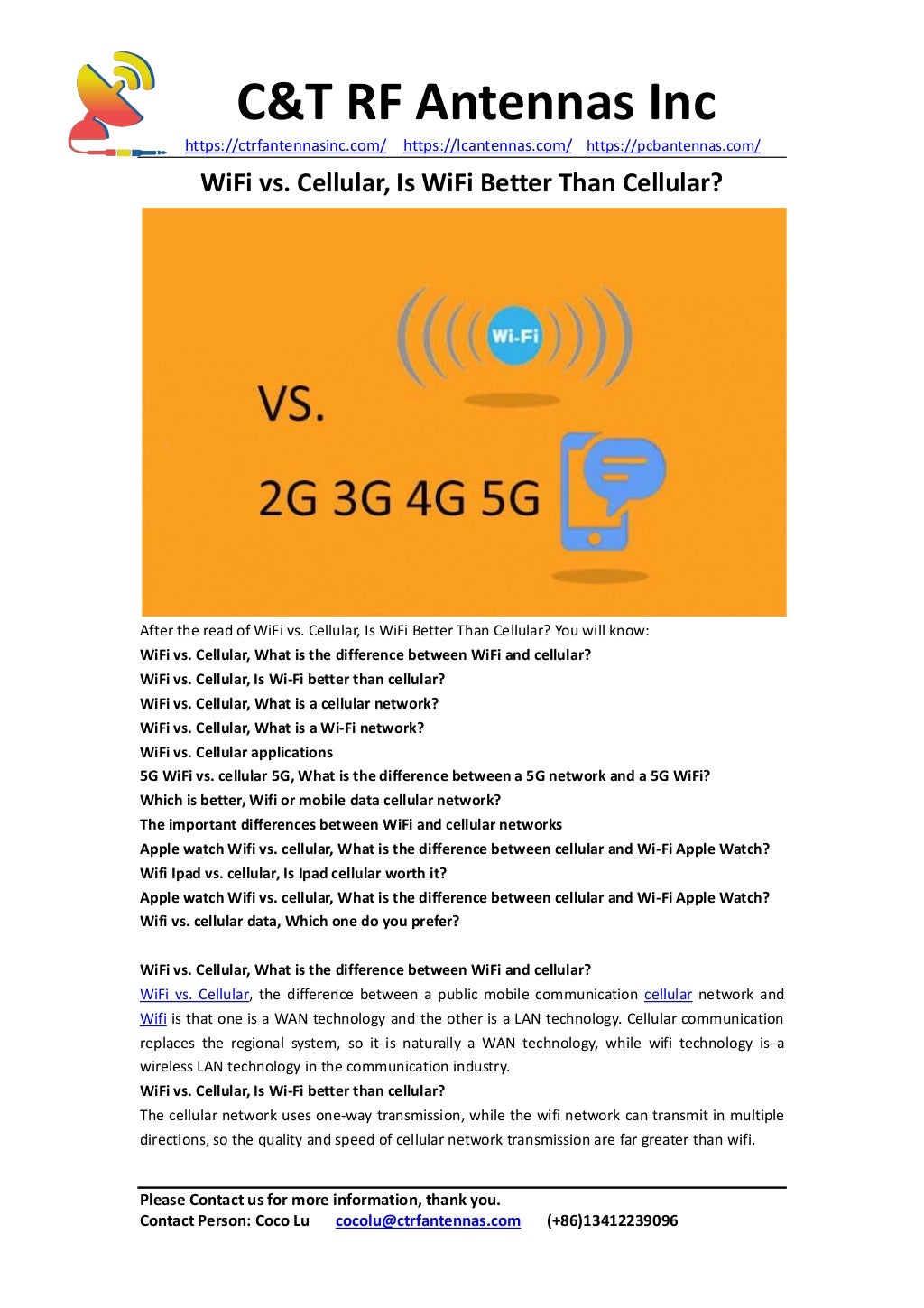After the read of WiFi vs. Cellular, Is WiFi Better Than Cellular? You will know:
WiFi vs. Cellular, What is the difference between WiFi and cellular?
WiFi vs. Cellular, Is Wi-Fi better than cellular?
WiFi vs. Cellular, What is a cellular network?
WiFi vs. Cellular, What is a Wi-Fi network?
WiFi vs. Cellular applications
5G WiFi vs. cellular 5G, What is the difference between a 5G network and a 5G WiFi?
Which is better, Wifi or mobile data cellular network?
The important differences between WiFi and cellular networks
Apple watch Wifi vs. cellular, What is the difference between cellular and Wi-Fi Apple Watch?
Wifi Ipad vs. cellular, Is Ipad cellular worth it?
Apple watch Wifi vs. cellular, What is the difference between cellular and Wi-Fi Apple Watch?
Wifi vs. cellular data, Which one do you prefer?









